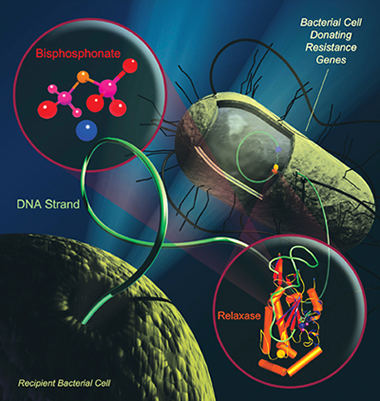* 2000 B.C. – Here, eat this root
* 1000 A.D. – That root is heathen. Here, say this prayer.
* 1850 A.D. – That prayer is superstition. Here, drink this potion.
* 1920 A.D. – That potion is snake oil. Here, swallow this pill.
* 1945 A.D. – That pill is ineffective. Here, take this penicillin.
* 1955 A.D. – Oops….bugs mutated. Here, take this tetracycline.
* 1960-1999 – 39 more “oops”…Here, take this more powerful antibiotic.
* 2000 A.D. – The bugs have won! Here, eat this root.
— Anonymous
From the World Health Organization, “How Resistance Develops and Spreads” (emphasis added):
Twenty years ago physicians in industrialized nations believed that infectious disease were a scourge of the past. With industrialization came improved sanitation, housing and nutrition, as well as the revolutionary development of disease-fighting antimicrobials. Populations living in those nations were not only enjoying an unprecedented decrease in mortality and morbidity, but a corresponding increase in life expectancy. …
Confident in this pharmacopoeia, major drug manufacturers turned away from intensive antibacterial research, and concentrated their energies on seeking cures for heart disease, Alzheimer’s and other chronic diseases – thus effectively closing the door on further research into new drugs designed to combat bacterial infections. Indeed, since the early 1980s, significant breakthroughs have been largely confined to the development of antiviral agents targeting the ever-widening HIV epidemic.
Researchers soon discovered that pathogens develop resistance to antimicrobials through a process known as natural selection. When a microbial population is exposed to an antibiotic, more susceptible organisms will succumb, leaving behind only those resistant to the antimicrobial onslaught. These organisms can then either pass on their resistance genes to their offspring by replication, or to other related bacteria through “conjugation” whereby plasmids carrying the genes “jump” from one organism to another. This process is a natural, unstoppable phenomenon exacerbated by the abuse, overuse and misuse of antimicrobials in the treatment of human illness and in animal husbandry, aquaculture and agriculture. … Our challenge is to slow the rate at which resistance develops and spreads.

Image source: National Review of Medicine
Related posts:
Links of interest: Antibiotic resistance
Overuse of antibiotics: Follow the money (part 1)
Overuse of antibiotics: A remote study (part 2)
Antibiotic resistance genes in soil microbes
Global challenge: 10 new antibiotics by 2010
Why are there no new antibiotics?
Gonorrhea bacteria: The next superbug?
Sources:
(Links will open in a separate window or tab.)
The World Health Organization, Factors Contributing to Resistance



Sorry, comments are closed for this post.